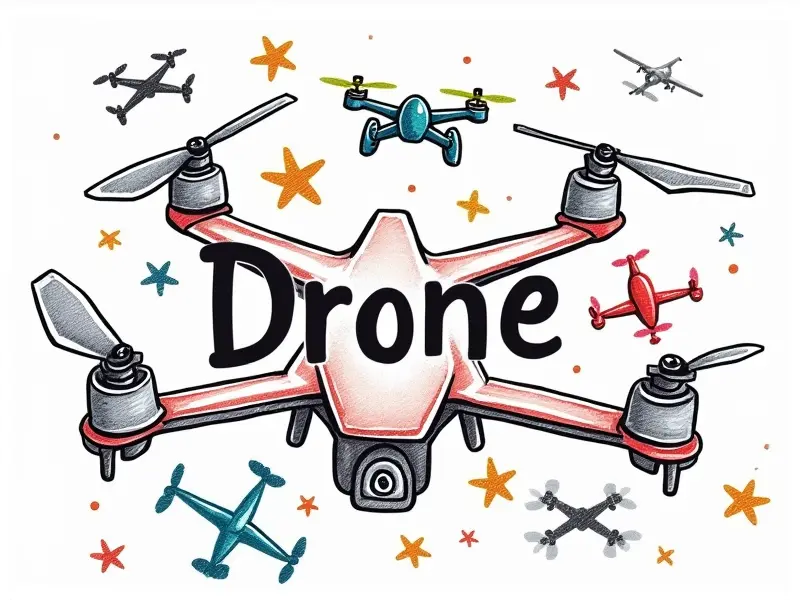Can I fly an FPV drone in rain?

Can You Fly Your FPV Drone in the Rain?
Flying a first-person view (FPV) drone can be an exhilarating experience, but what happens when inclement weather rolls in? Can you still enjoy your hobby during rainy days? This article delves into whether it's feasible and safe to fly FPV drones in wet conditions.
Risks of Flying FPV Drones in Rainy Conditions
Flying an FPV drone in the rain poses several risks that could compromise both your equipment and safety:
- Electrical Damage: Water can cause short circuits, damaging sensitive electronics.
- Motor Failure: Moisture can reduce motor efficiency and lead to overheating or malfunction.
- Cameras and Antennas: Raindrops on lenses and antennas can impair visibility and signal quality.
How Rain Affects FPV Drone Performance and Safety
Rain significantly impacts the performance and safety of your FPV drone in several ways:
- Poor Visibility: Wet lenses distort images, making it harder to navigate.
- Battery Drain: Higher resistance from wet conditions can cause batteries to drain faster.
- Signal Interference: Raindrops and moisture can disrupt radio signals, affecting control responsiveness.
Tips for Flying FPV Drones When It's Raining
If you must fly your drone in the rain, follow these tips to minimize risks:
- Waterproofing Gear: Use waterproof covers or cases designed for drones.
- Battery Management: Keep extra batteries dry and ready to swap out quickly.
- Clean Lenses Regularly: Wipe off raindrops frequently to maintain clear visibility.
Is Flying an FPV Drone in Light Rain Safe?
Flying in light rain might seem less risky, but it still carries significant hazards. Even a slight drizzle can compromise your drone's electronics and performance:
- Moderate Risk: Light rain increases the likelihood of moisture damage.
- Visibility Issues: Despite being light, raindrops on lenses still affect visibility.
Can FPV Drones Handle Wet Conditions?
The ability of an FPV drone to handle wet conditions largely depends on its design and durability. Some models are more resistant than others:
- Durable Construction: Look for drones with sealed compartments and waterproof coatings.
- Weatherproof Components: Check if the drone has water-resistant motors and batteries.
Should You Avoid Flying FPV Drones During Rain?
In most cases, it's best to avoid flying your FPV drone during rain. The risks often outweigh any potential benefits:
- Safety First: Prioritize the safety of both you and your equipment.
- Maintenance Costs: Repairing water damage can be expensive and time-consuming.
Impact of Rain on FPV Drone Performance
The impact of rain on FPV drone performance is substantial, affecting everything from flight stability to signal strength:
- Reduced Flight Time: Wet conditions can shorten battery life and reduce overall flight duration.
- Inconsistent Control: Moisture in the air can cause erratic control responses.
Weatherproofing Your FPV Drone for Rainy Days
To protect your drone from rain, consider these weatherproofing measures:
- Use Protective Cases: Invest in waterproof cases designed to shield drones from moisture.
- Apply Water-Repellent Coatings: Apply specialized coatings that repel water and protect components.
Tips for Flying FPV Drones Safely in Light Rain
If you decide to fly your drone in light rain, follow these safety tips:
- Short Flight Duration: Limit flight time to minimize exposure to moisture.
- Frequent Checks: Regularly inspect the drone for signs of water intrusion during and after flights.
Can You Protect Your FPV Drone from Rain?
While it's challenging to fully protect your FPV drone from rain, you can take steps to mitigate risks:
- Select Weather-Resistant Models: Choose drones designed with weatherproof features.
- Leverage Protective Gear: Utilize waterproof covers and cases for added protection.
Conclusion
Flying an FPV drone in the rain is generally not advisable due to significant risks of electrical damage, motor failure, and reduced performance. While some measures can help protect your equipment, the safest approach is to avoid flying during wet conditions altogether. Prioritize safety and maintain your drone's longevity by keeping it dry.

